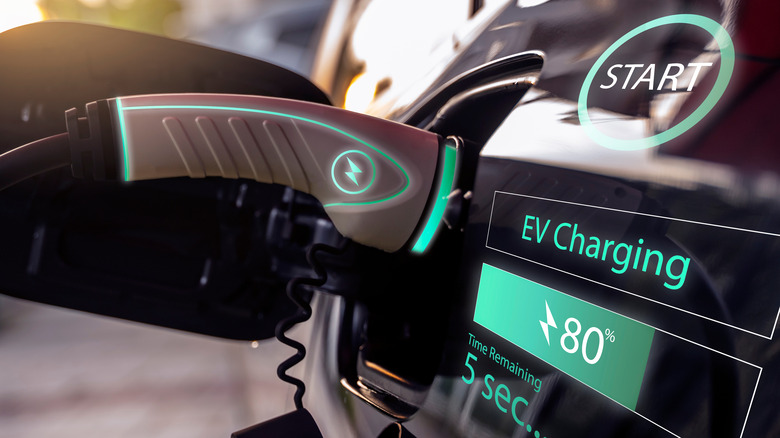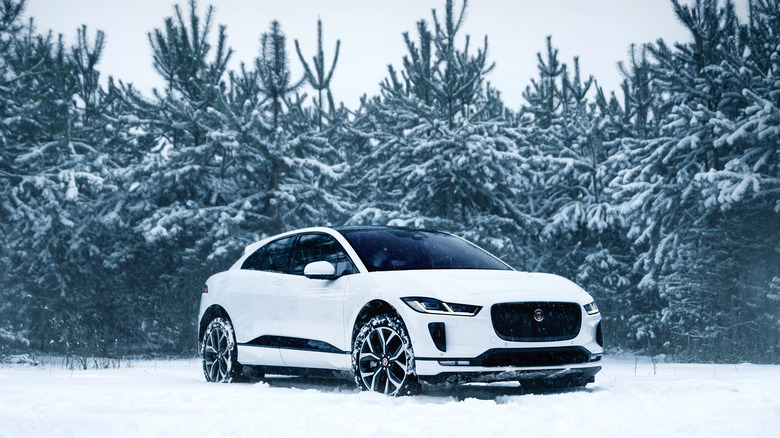This Is How Temperature Can Affect EV Range
Drivers are increasingly switching to electric vehicles, but range anxiety continues to be a big concern for many potential buyers. The first EVs on the market had very low ranges — for example, the GM EV1 could only travel 70 to 100 miles fully charged, according to Electric Vehicles News. This worry stigmatized the green electric mobility movement in its early years, slowing down mainstream adoption, but modern technology is changing things. In 2015, for example, Elon Musk announced a software update for the Tesla Model S sedan that was intended to eliminate range anxiety among drivers (via Wired).
Fast-forward a few years and most new EV models had ranges around 300 miles, as well as support for fast charging. Despite progress in this area, range continued to be one of the least understood aspects of EV ownership among the general public, however. In 2021, The Harris Poll surveyed Americans' on their perception of EVs and found that more than one-third of all participants cited "distance they can travel on a single charge" as their main concern when thinking about buying an electric vehicle. Around 20% of participants said the relatively small number of charging stations was another barrier to their adoption of the technology.
For those living in cold or hot climates, range anxiety intensifies with bigger concerns. While EV makers list their vehicles' ranges as EPA estimates, these tests do not take extreme temperatures into consideration, according to CleanTechnica, leaving many drivers to wonder whether their local climate is negatively impacting how far their car can travel before needing to be recharged.
What happens when I charge my EV in cold or hot weather?
Both cold and hot weather have been proven to affect EV charging times, range performance, and the degradation and lifecycle of EV batteries. In 2018, for example, the Idaho National Laboratory conducted a study involving Nissan Leaf EVs operated as taxis in New York City in temperature conditions ranging from 15 to 103 degrees Fahrenheit. The lab found that when temperatures decreased, charging times increased. For example, EV batteries fast-charged at 77 degrees Fahrenheit reached 80% in half an hour, while the same kind of batteries only achieved a 44% charge over the same duration when the temperature was 32 degrees Fahrenheit. Charging an EV inside a warn garage is one of the proposed solutions for domestic users, though that assumes drivers have access to this type of charging space.
AAA reached a similar conclusion in a study published in 2019. According to the researchers, EV range decreased by 41% when charged at 20 degrees Fahrenheit while the vehicle's interior heating system was turned on to keep drivers warm. Cold temperatures aren't the only potential weather issue that EV owners should keep in mind when it comes to range, however.
As reported by Recurrent, high temperatures are not just bad for charging but can also damage batteries over time. Small fissures and cracks can appear in an EV battery's components when charged at high temperatures, impacting the chemical reactions. Degradation of EV batteries due to exposure to hot weather, as well as charging in hot weather, may affect range performance. While EV automakers continue to make substantial improvements in the technology behind these vehicles, extreme temperatures are something potential buyers should keep in mind when considering their next vehicle purchase.

